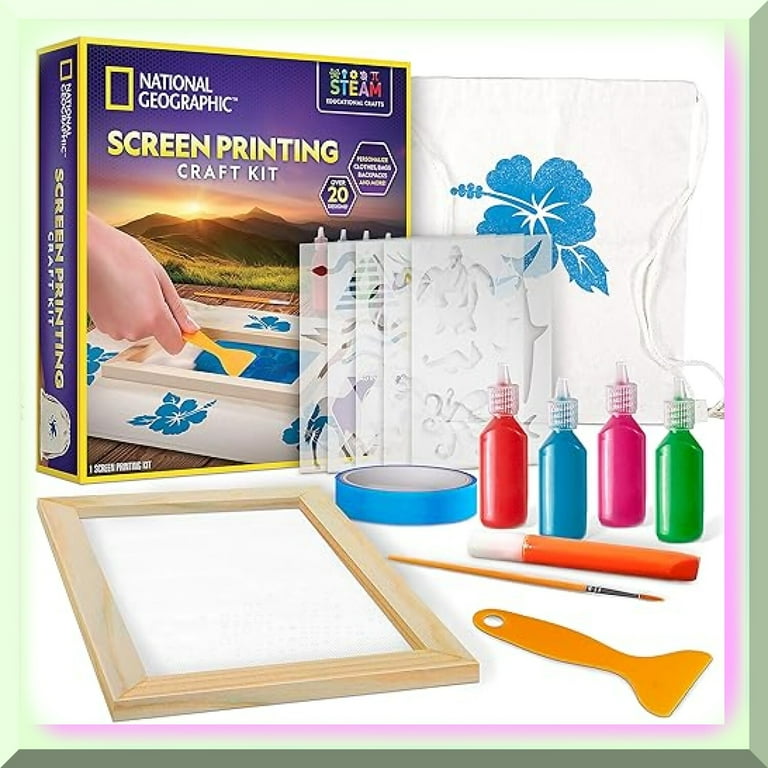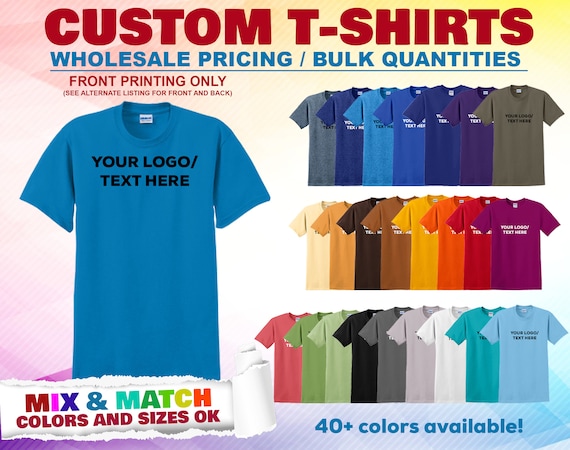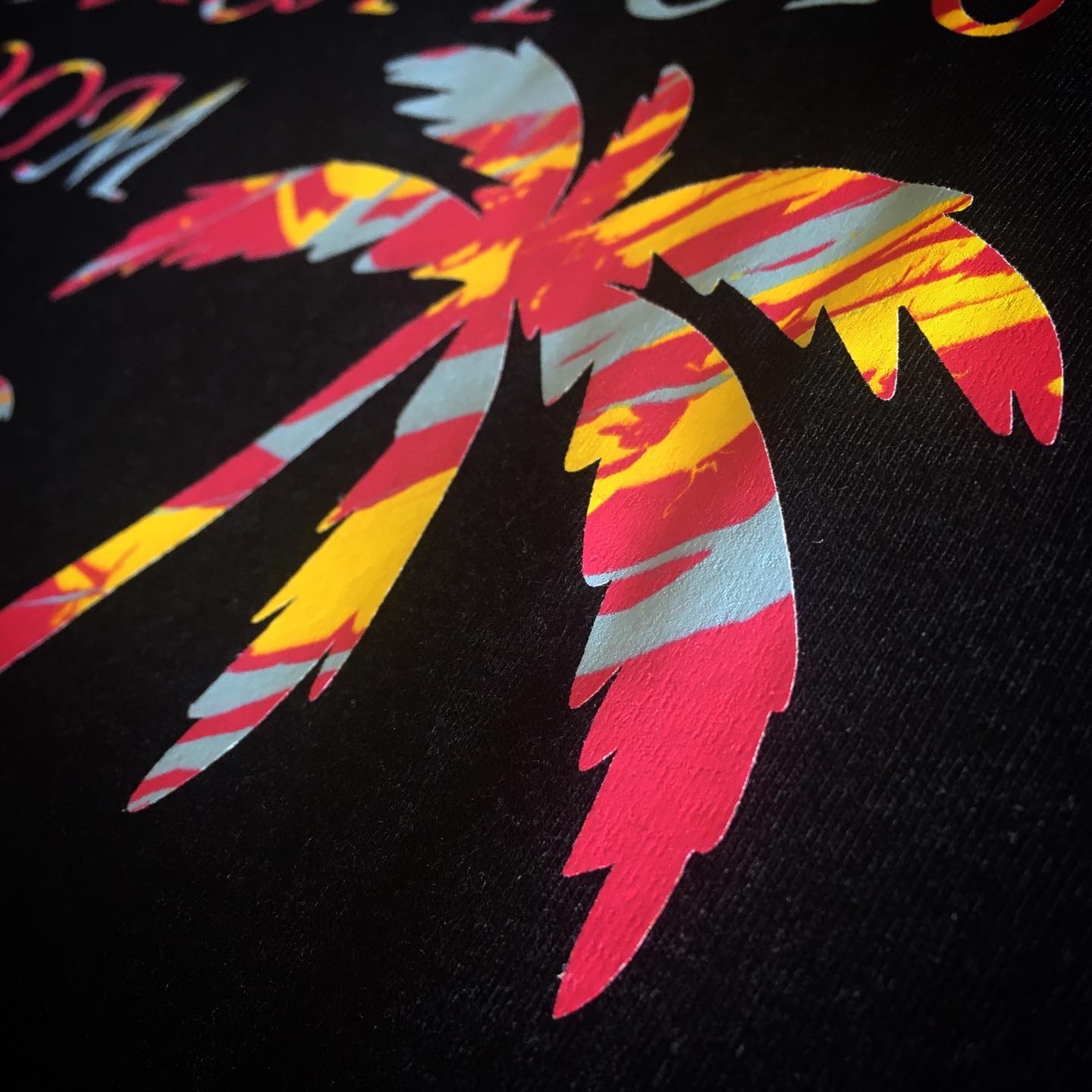Artistic Silk Screen Printing for Limited Edition Prints
Artistic Silk Screen Printing for Limited Edition Prints
Blog Article
Display Printing Uncovered: Everything You Required to Learn About Tee and Garment Printing Strategies
If you have actually ever questioned just how those dynamic layouts finish up on your preferred tee shirts, you're in the ideal location. Display printing is a fascinating approach that combines art with technique, offering limitless possibilities for creative thinking. Understanding the basics, from tools to ink choices, can greatly influence your outcomes. Prepared to check out the crucial components that make screen printing an art form? Allow's uncover the information that can raise your jobs.
The Fundamentals of Display Printing: Exactly How It Works
When you plunge into screen printing, you'll discover it's both a science and an art. At its core, display printing involves producing a stencil, or screen, that enables ink to pass through just in certain areas.
Placement the display over the fabric, then utilize a squeegee to press ink with the screen onto the garment. Each step is vital, and understanding them will certainly boost your screen printing abilities, transforming easy garments right into one-of-a-kind, meaningful pieces.
Kinds of Display Printing Methods
When you realize the basics of screen printing, it's time to discover the various methods that can boost your designs. One popular approach is conventional display printing, where ink is pressed with a stenciled screen. This technique is wonderful for strong, dynamic colors. Then there's water-based ink printing, which uses a softer feeling and is green, but it calls for a various method to treating.
If you're going for great information, take into consideration discharge printing. This method eliminates dye from the fabric, leaving a soft, classic look. Another option is plastisol printing, recognized for its longevity and brilliant shades, making it a favored for several brand names. Experiment with halftone printing to develop slope impacts and detailed layouts. Each technique has its distinct charm, so don't wait to attempt them bent on discover what fits your style best!
Essential Equipment for Display Printing
To accomplish stunning lead to display printing, having the right equipment is fundamental. Initially, you'll require a sturdy display printing framework, which holds the mesh that transfers your design onto the garment. Next off, spend in premium squeegees; these are vital for applying ink equally throughout the display. You'll likewise need a good direct exposure device to produce your screens, as well as a washout cubicle for cleansing them after use. A dependable warm source, like a conveyor clothes dryer or heat press, is critical for curing your prints to guarantee longevity. Do not forget a correct work area, furnished with tables and storage for your supplies. Protective equipment, such as masks and gloves, will maintain you safe from chemicals and inks. With the right devices, you'll be well on your method to producing professional-quality prints.
Picking the Right Inks and Materials
When picking inks and materials for screen printing, you require to think about the sort of ink that works finest for your task. Think of textile compatibility to ensure your styles look last and wonderful lengthy. Likewise, discover eco-friendly ink choices to make your printing procedure a lot more lasting.
Sorts Of Display Inks
Selecting the appropriate display ink is vital for accomplishing vivid, sturdy prints that meet your task's demands. There are several types of screen inks to examine. Specialty inks, such as metallic or glow-in-the-dark, can include unique impacts to your layouts.

Material Compatibility Considerations
Recognizing textile compatibility is important for achieving high-quality screen prints, specifically since various materials respond distinctively to various inks. Constantly check your inks on example textile to ensure they stick appropriately and maintain color integrity. Furthermore, keep in mind that material weight and structure can affect the last end result, so choosing the appropriate ink and product combo is crucial for your task's success.
Eco-Friendly Ink Options
Green inks are ending up being a popular option for screen printers that want to decrease their environmental influence while keeping quality. When picking inks, think about water-based inks, which are much less unsafe and easier to clean up contrasted to typical solvents.
In addition, try to find inks made from sustainable sources, such as soy or vegetable-based options. By selecting the best inks and materials, you'll not just create sensational styles yet also add to a more sustainable printing process. Make the button, and your prints will certainly show your commitment to the atmosphere!
Preparing Your Layout for Display Printing

File Layout Requirements
To assure your layout looks sharp and dynamic on textile, you'll require to pay very close attention to file format demands for display printing. Begin with vector documents like AI or EPS, as they can be scaled without shedding top quality. If you utilize raster photos, choose high-resolution files, such as TIFF or PNG, ideally at 300 DPI. Avoid utilizing JPEGs, as they can lose clearness when resized. Make sure your design has a clear background to prevent undesirable white sides on your prints. Keep shade modes in mind; CMYK is common for display printing, so transform your RGB designs accordingly - screen printing kit. By adhering to these guidelines, you'll establish your art work up for a successful print.
Shade Splitting Up Techniques
Color splitting up is a crucial step in preparing your style for display printing, and mastering it can substantially enhance your print top quality. You'll require to damage your design right into individual shades, as each shade needs a different screen throughout printing. This precision not just guarantees accurate shade representation yet also streamlines the printing process.
Resolution and Dimension
Achieving the best results visit this website in display printing begins with assuring your layout has the ideal resolution and size. Preferably, your artwork needs to be at the very least 300 DPI (dots per inch) for sharp, clear prints. Your final item might look amateur and pixelated. if you use reduced resolution.
When it pertains to dimension, take into consideration the dimensions of your print location. Design your art work to match the final print dimension, ideally producing it in the real dimensions you'll be printing. By doing this, you'll prevent any kind of unanticipated scaling problems.
Constantly examine your design in both vector and raster layouts. Vector graphics can be scaled without shedding high quality, making them excellent for screen printing. Preparing appropriately will assure your layout looks amazing on every garment!
Step-by-Step Screen Printing Refine
Display printing is a dynamic process that enables you to create dynamic layouts on different surfaces. To obtain begun, you'll need a display, emulsion, Get More Information and your selected ink.
Pour ink onto the display and utilize a squeegee to push the ink via the pattern onto the material. Lift the display very carefully and allow the print dry. You've effectively display printed your layout.
Tips for Effective Screen Printing Projects
While you're diving right into your screen printing tasks, bear in mind that preparation is crucial to success. Begin by collecting all your materials-- inks, displays, garments, and squeegees. A clean workspace assists avoid unwanted errors, so clean up before you begin.
Next, verify your artwork is high-resolution and correctly sized for your garment. Check your screen for correct exposure and clean it extensively to avoid smudges. When mixing your inks, follow the supplier's standards to achieve the best uniformity.
Throughout printing, use even stress with your squeegee for constant outcomes. Do not rush; take your time to validate each print meets your criteria. After printing, allow your garments dry totally before handling or packaging them.
Finally, constantly maintain an example of your benefit future reference. By doing this, you can examine your development and boost your techniques in time. Happy printing!

Often Asked Inquiries
Just how Lengthy Does It Require To Establish a Display Printing Task?
Setting up a screen printing job usually takes about thirty minutes to an hour. You'll prepare the screens, mix inks, and readjust journalism. The moment differs based on intricacy and experience, so stay arranged!
Can I Print on Various Material Enters Using the Exact Same Method?
Yes, you can publish on various material types using the very same strategy, but you'll need to adjust your inks and settings. Some fabrics absorb ink in a different way, so experimenting warranties the most effective results for every material.
What Prevail Mistakes to Stay Clear Of in Screen Printing?
When display printing, prevent usual errors like making use of the wrong ink, disregarding proper exposure times, or skipping pre-press checks. Constantly evaluate your arrangement and keep clean displays to ensure high quality results each time.
Exactly How Can I Appropriately Clean and Maintain My Screen Printing Tools?
To effectively tidy and keep your screen printing tools, you ought to regularly wash screens with ideal solvents, examine squeegees for wear, read more and guarantee all devices are kept dry and dust-free. Consistency enhances and avoids costly repair services efficiency.
Is Display Printing Ecologically Pleasant Compared to Other Techniques?
Display printing can be a lot more eco pleasant than other techniques, especially if you use water-based inks and eco-conscious materials. By selecting lasting products and methods, you decrease waste and reduce your influence on the world.
Screen Printing Uncovered: Every Little Thing You Required to Know Concerning Tee Shirt and Garment Printing Strategies
At its core, screen printing includes developing a stencil, or display, that enables ink to pass via just in specific areas. Setting the display over the material, after that use a squeegee to press ink with the screen onto the garment. One preferred technique is traditional screen printing, where ink is pressed through a stenciled screen.When picking inks and materials for display printing, you need to take into account the kind of ink that works finest for your job.
Report this page